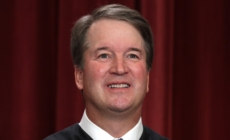-
Robert Lindsey, Times Reporter and Reagan Ghostwriter, Dies at 90 - 11 mins ago
-
What Hollywood Has That TikTok, Video Games and YouTube Don’t - 54 mins ago
-
Brett Kavanaugh Made ‘Important Clarification’ in SCOTUS Opinion—Analysts - about 1 hour ago
-
Golden Retriever Refuses To Go Out—Then Owner Realizes Who Is Home - 2 hours ago
-
Estonia’s Man on Capitol Hill Is on a Charm Offensive - 2 hours ago
-
How to Watch Thunder vs Spurs: Live Stream NBA on Christmas, TV Channel - 2 hours ago
-
Prominent Leaders Amplify Disinformation About Brown University Shooting - 2 hours ago
-
Dog Ruins Carpet—What’s Underneath Ends Up Being the Best Christmas Present - 3 hours ago
-
No Power, No Heat, No Water: Odesa’s Days of Hell Under Russian Fire - 3 hours ago
-
Joe Rogan Trashes Donald Trump, Questions If He’s Losing It - 3 hours ago
Trump $2,000 check update: Scott Bessent gives advice on direct payments
Treasury Secretary Scott Bessent suggested Tuesday that President Donald Trump’s administration might urge Americans to save a proposed $2,000 “tariff dividend” rather than spend it, in an effort to avoid potential inflationary effects.
During an interview on Fox News, host Bret Baier asked whether sending the checks to most Americans would increase inflation. Bessent did not directly say it would, but replied, “Maybe we could persuade Americans to save that.”
Inflation is currently at 3 percent, the highest since January, according to data from the U.S. Bureau of Labor Statistics.
Why It Matters
Trump’s proposal to distribute $2,000 checks to Americans has reignited debate on the economic impact of using tariff revenue for direct payments. While the plan aims to share tariff-driven gains with middle- and lower-income households, questions remain about its feasibility, potential inflationary pressures, and the mechanism for distribution.
The proposal comes amid ongoing scrutiny of the actual revenue generated by tariffs and its sufficiency to fund such an initiative.

What To Know
Trump has repeatedly touted the plan. “We’re going to be issuing dividends later on, somewhere prior to, you know, probably the middle of next year, a little bit later than that. Thousands of dollars for individuals of moderate income, middle income,” he said from the Oval Office on Monday.
The administration has not published detailed eligibility criteria, but Bessent has previously indicated that families earning less than $100,000 would qualify. However, he and other officials have stressed that congressional approval is required to advance the proposal. “We will see, we need legislation for that,” Bessent told Fox News last week.
There are prominent doubts about whether tariff revenues are sufficient to fund the payments. According to the Treasury Department, the federal government raised $195 billion in customs duties for the fiscal year 2025. The Tax Foundation estimates the cost of $2,000 dividend checks—after excluding high earners—would reach roughly $300 billion.
Trump himself has claimed far higher tariff revenues. On Truth Social, he wrote, “We are taking in Trillions of Dollars and will soon begin paying down our ENORMOUS DEBT, $37 Trillion.”
What People Are Saying
Erica York, vice president of the Tax Foundation, previously told Newsweek: “Sending out checks to Americans is a recipe for higher inflation at a time when inflation is still stubbornly too high.”
Maurice Obstfeld, a senior fellow at the Peterson Institute for International Economics, previously told Newsweek: “Already under pressure from higher prices of necessities, most households would spend rather than save the money, driving prices even higher.”
Treasury Secretary Scott Bessent, in an interview with ABC News earlier this month, said: “I haven’t spoken to the president about this yet, but, you know, it could—the $2,000 dividend could come in lots of forms. It could be just the tax decreases that we are seeing on the president’s agenda. You know, no tax on tips, no tax on overtime, no tax on Social Security, deductibility of auto loans.”
What Happens Next
The timeline outlined by Trump suggests payments could reach Americans by mid-2026. To meet this target, the administration must draft and pass legislation through Congress, a process complicated by fiscal concerns, political divisions, and debate over the true economic impact of the measure. As of now, no legislative text or official guidance has been released.
Source link
















